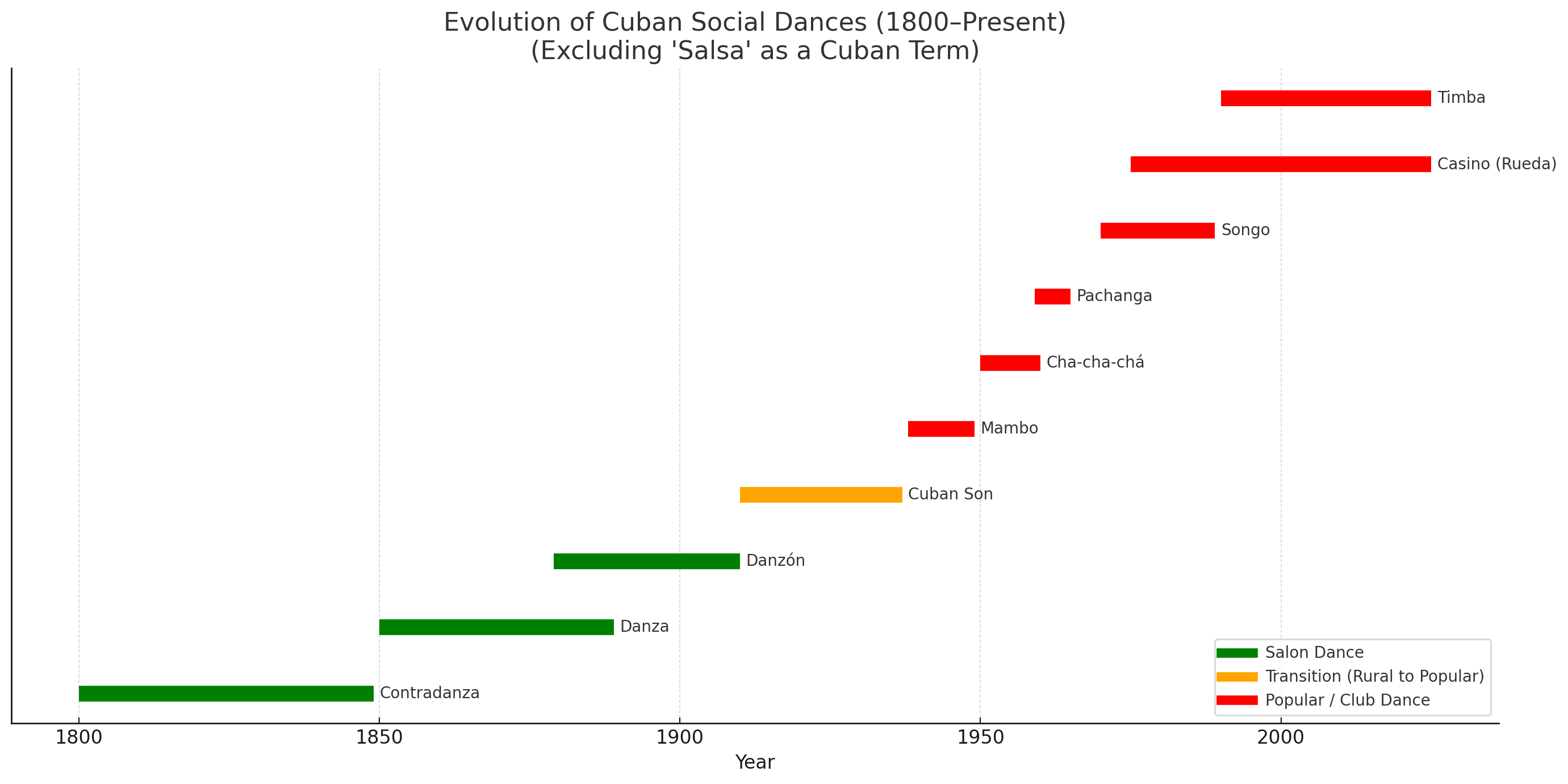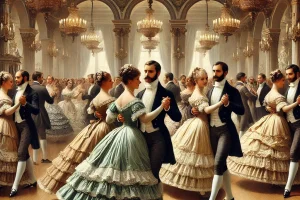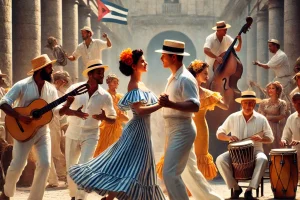Cuban dance evolution: Salon vs Popular Settings

- Green = Salon dances (formal, indoors)
- Orange = Transitional (from rural or informal toward broader popularity)
- Red = Dance hall/club dances (popular, social settings)
Contradanza – Early 19th century (1800s)
It evolved from European contredanse and was popular in the early 1800s in Cuba ( 1830-1840 ). Contradanza is an Cuban dance with European roots, influenced by French and English country dances. It became popular in Cuba and later evolved into genres like Danzón, Mambo, and Salsa.

Danza - Mid to Late 19th century (1850-1890)
A more Cubanized form of contradanza, it became prominent in the latter half of the 19th century.
Danzón – Late 19th century, around 1879
Officially born with the composition "Las Alturas de Simpson" by Miguel Faílde in 1879.
Cuban Son – Early 20th century, around the 1910s
Gained widespread popularity in Cuba in the 1920s, blending African and Spanish musical elements. Cuban Son is a foundational Cuban music and dance style that emerged in the late 19th century, blending Spanish and African musical traditions. It features instruments like the tres, bongos, maracas, and the clave rhythm. Son music typically follows a structure with a verso (verse) section and an improvisational montuno section, often accompanied by smooth, close-partner dancing.
Son played a key role in the evolution of Salsa and became a symbol of Cuban culture, influencing genres globally. Important artists like Arsenio Rodríguez and Buena Vista Social Club helped popularize Son internationally. More

Mambo – Late 1930s to 1940s
Developed in the late 1930s and popularized internationally in the 1940s, with figures like Dámaso Pérez Prado playing a major role.
Cha-cha-chá – Early 1950s
Created by composer Enrique Jorrín around 1953, becoming a hit in Cuba and beyond shortly after.